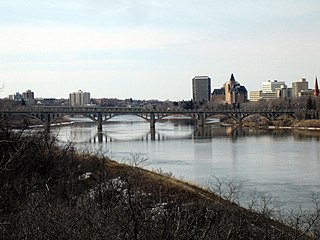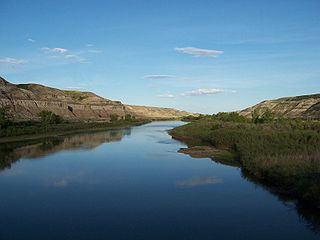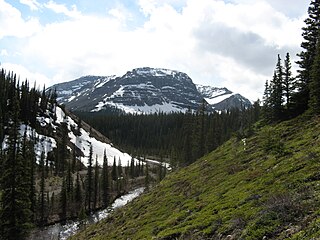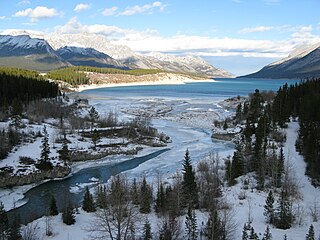| Ram River | |
|---|---|
| Country | |
| Physical characteristics | |
| Main source | Ram River Glacier 2,374 m (7,789 ft) 51°53′19″N116°10′59″W / 51.88861°N 116.18306°W |
| River mouth | North Saskatchewan River 1,048 m (3,438 ft) 52°22′32″N115°24′06″W / 52.37556°N 115.40167°W Coordinates: 52°22′32″N115°24′06″W / 52.37556°N 115.40167°W |
The Ram River is a river rising in the Alberta Rocky Mountains. It flows eastward, taking on the North Ram River, before joining the North Saskatchewan River near the Town of Rocky Mountain House. The name Ram Rivulet appears on a David Thompson map of 1814. A ram is a male Rocky Mountain Sheep. [1]

Alberta is a western province of Canada. With an estimated population of 4,067,175 as of 2016 census, it is Canada's fourth most populous province and the most populous of Canada's three prairie provinces. Its area is about 660,000 square kilometres (250,000 sq mi). Alberta and its neighbour Saskatchewan were districts of the Northwest Territories until they were established as provinces on September 1, 1905. The premier is Jason Kenney as of April 30, 2019.

The Rocky Mountains, also known as the Rockies, are a major mountain range in western North America. The Rocky Mountains stretch more than 4,800 kilometers (3,000 mi) from the northernmost part of British Columbia, in western Canada, to New Mexico in the Southwestern United States. Located within the North American Cordillera, the Rockies are somewhat distinct from the Pacific Coast Ranges, Cascade Range, and the Sierra Nevada, which all lie farther to the west.

The North Saskatchewan River is a glacier-fed river that flows from the Canadian Rockies continental divide east to central Saskatchewan, where it joins with another major river to make up the Saskatchewan River. Its water flows eventually into the Hudson Bay.
Contents
The Ram River is characterized by numerous waterfalls and deep canyons throughout its course. It is first bridged by Alberta Highway 734, and again by a secondary road above its confluence with the North Saskatchewan River. Ram Falls Provincial Recreation Area is also located on the river.
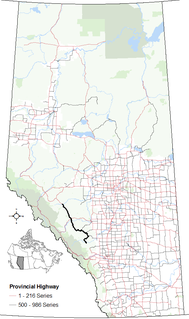
Alberta Provincial Highway No. 734, commonly referred to as Highway 734, is a highway in western Alberta, Canada that travels through the forested foothills of the Rocky Mountains. It used to be part of Forestry Trunk Road and is still colloquially referred to as such.

In geography, a confluence occurs where two or more flowing bodies of water join together to form a single channel. A confluence can occur in several configurations: at the point where a tributary joins a larger river ; or where two streams meet to become the source of a river of a new name ; or where two separated channels of a river rejoin at the downstream end.

Ram Falls Provincial Park is a provincial park in Alberta, Canada, located 64 km (40 mi) south of Nordegg and 95 km (59 mi) west of Rocky Mountain House on Highway 734.
